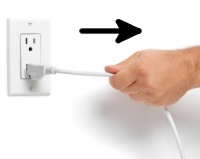
Preview Others Posts
You will need to add a new user capability, modify one file from WordPress core and add little piece of code to your theme functions.php file. Are you ready? Let’s go!


Preview Others Posts


delete users
delete_users capability. Is it enough? No. In order to delete user, you need to select it from user list. Thus, you should have some other user capability. Yes, it is 'list_users' capability. Without such capability you can not access your blog users list (“Users->All Users” menu item) under single-site WordPress installation and can not apply “Delete” command to selected user. Continue reading to see more detailed description and (if you curious enough) look inside WordPress core source code to know where and how WordPress implements ‘delete_users’ security permission.


delete_themes
delete_themes user capability. It is clear from its name, isn’t it? You are right. But it is not full true. It’s useful to know, that if you have not switch_themes capability under single-site WordPress installation, you can not delete selected theme, even if you click ‘Delete’ command from WordPress interface. Interesting? Continue reading and see more detailed description or (if you curious enough) even look inside WordPress core source code together with me.delete_themes capability in this WordPress core files:

Delete plugin
delete_plugins WordPress user capability allows user to delete not active plugins. Such user has to have access to the “Plugins” menu at WordPress administrator back-end (requires activate_plugins capability for that). In order to delete plugin user can use plugin row link, which is shown under each plugin name, or bulk action, applied to the selected set of plugins simultaneously.delete_plugins capability is used inside these WordPress core files:

User Role Editor v. 3.5

add_users capability
The only place where you can find ‘add_users’ WordPress user capability in WordPress source code is
/wp-admin/includes/schema.php:
781 | $role->add_cap( 'add_users' ); |

User Role Editor 3.3
